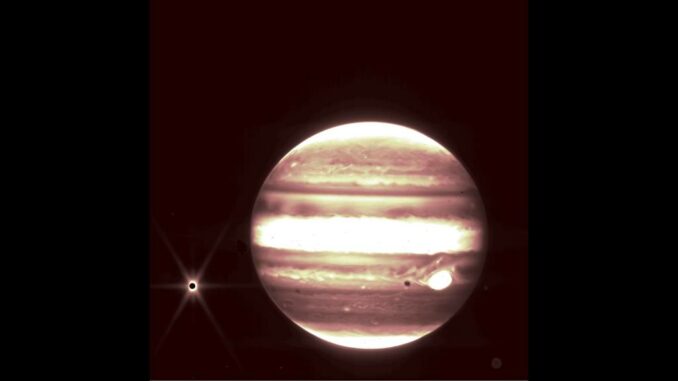
The first picture of Jupiter taken by the James Webb Space Telescope is also “up close and personal.”
New photos taken by NASA’s James Webb Space Telescope have been widely praised in recent days for their sharpness and clarity. The telescope, on the other hand, has the capability of focusing in on things right outside our window in the cosmos. Photos of Jupiter taken by NASA’s Hubble Space Telescope were primarily used to test its equipment.
When seen in comparison to photographs taken by the Juno spacecraft, the gas giant appears to be a little faded. Jupiter’s thin rings and numerous moons may be seen clearly and brightly in the infrared images.
Planetary scientist Stefanie Milam stated she couldn’t believe how clear and brilliant everything was. Bryan Holler, a colleague at the Space Telescope Science Institute in Baltimore, says the images highlight how adaptable the James Webb is. This shows the wide range of things Webb can see, from the farthest galaxies to the nearest planets.
The first “real” images of the new telescope were revealed on Tuesday after months of testing and calibration. On a growing number of websites, the Hubble Space Telescope is being compared to its predecessor.
There are a slew of multicoloured dots in the first NASA photograph. Professor Vincent Icke of astronomy discussed what may be observed on it on NPO Radio 1’s The News BV. It’s not hard to realise that every speck in the universe is a whole galaxy, each one the same size as our Milky Way, 13 billion years after the Big Bang, and 800,000 years after the Big Bang. When you gaze out into space, you are actually looking backwards in time. “
Many more cosmic objects will be targeted by Webb in the coming future. Requests for this can be made by scientists. Two extrasolar planets will be the focus of the telescope next summer. These are worlds that revolve around a different star than our sun.

Be the first to comment